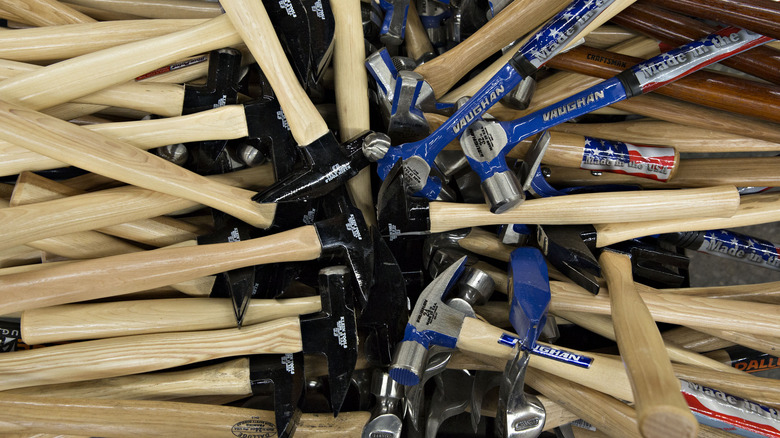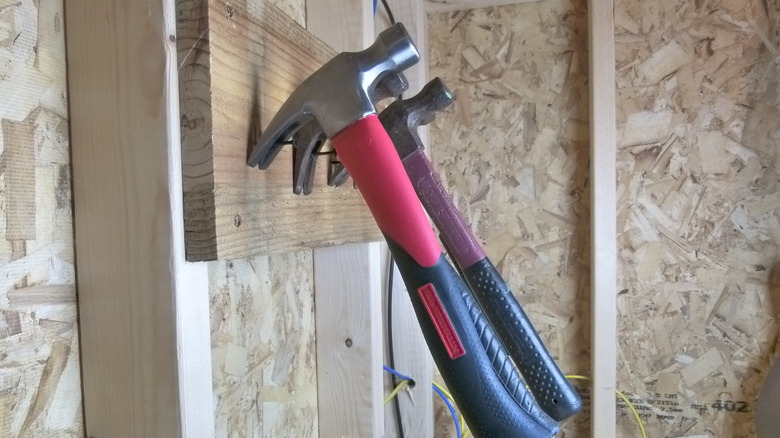Store Your Hammer With This Easy Screw Hack
Some DIYers seem to enjoy using their workshops mostly to make their workshops. You will know them by their modular French cleat storage systems, elaborate walls of clean clamps, and banks of shallow drawers with those little card catalog drawer pulls. People who are trying to get things done, on the other hand, are more likely to toss a hammer in a drawer and move on. But you can have an organized and efficient home for your claw and framing hammers without spending a week modeling something in SketchUp. And, like so many other carpentry shortcuts, this one involves little more than a handful of drywall screws.
The idea is to drive the screws (equally spaced, if you're fussy) partway in a horizontal row. Hang your hammers from them as if they were abandoned halfway through a mistaken attempt to pull the screw out. The notch in the hammer's claw will catch somewhere along the threading of the screw, which becomes a pivot. The claw tip rests against the wall, making this whole setup fairly secure. The best part is that when it comes time to pull down a hammer, it only takes a second to grab one and go.
How to hang up your hammer
There are a few tricks to making this work best, though just about any attempt will do. Because hammers come in such a variety of forms, hanging them all the same way will result in a snaggletooth affair with all of them sticking out at different angles. This can cause practical problems as well, since reaching for a hammer hanging lower might cause you to bump into an adjacent one at a shallower angle. To accommodate a range of claw sizes and shapes while taming the chaos, there are two helpful approaches to choosing and driving your drywall screws. Choose the longest screws you can get your hands on, and ones with fully threaded shafts if possible. Since the hammer will hang equally well from any point along the screw's length, you can then adjust the hanging angle when you put the hammer away. After a while, matching them all will become a subconscious, second-nature matter.
These don't actually have to be drywall screws, of course. The thinner shafts of drywall screws are probably the most flexible in terms of fitting hammer notches, but any normal woodworking or carpentry screw will work reasonably well.

